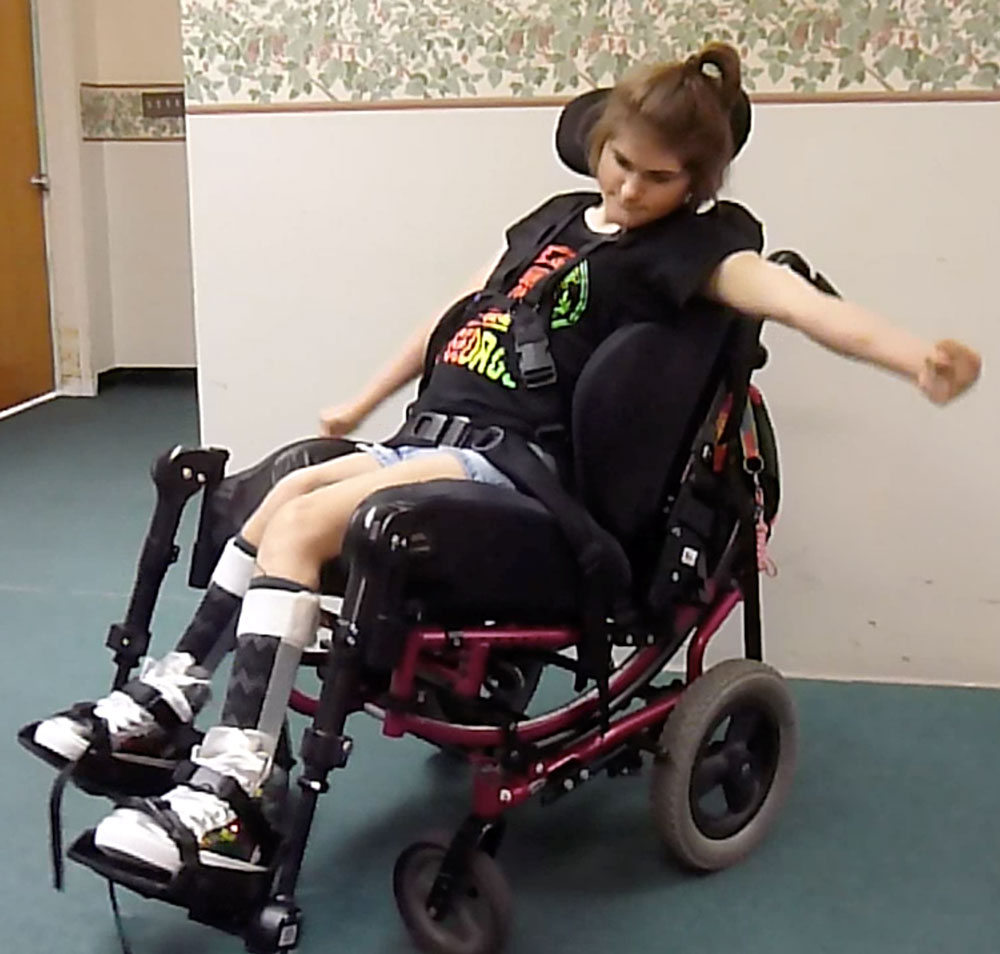Michelle L. Lange, OTR/L, ABDA, ATP/SMS
A number of years ago, we featured a series of Blogs on Clinical Indicators for Dynamic Seating intervention. We’ve learned a lot since then! This blog revisits this important issue by summarizing general indicators. Please refer to the links below for more information.

Dynamic Seating has many clinical benefits. This intervention allows Amber to move and diffuses strong extensor forces.
So, when is Dynamic Seating indicated for a wheelchair user?
Dynamic seating has many potential applications. Dynamic components absorb and diffuse force, protecting the wheelchair user from injury caused by sustained and/or repeated forces and reducing damage to the seating system and wheelchair. Movement provides sensory input which many clients seek out. Dynamic seating components may improve postural control, stability, and function. That’s the short answer.
Here is a list of more specific clinical applications:
- To protect the wheelchair user from injury
- To protect wheelchair and seating hardware from breakage
- To increase sitting tolerance and compliance
- To enhance vestibular input
- To facilitate active range of motion
- To increase alertness
- To decrease agitation
- To decrease fatigue
- To increase function
- To increase strength and postural control
- To reduce active extension
- To reduce energy consumption
Primary Clinical Scenarios:
Dynamic seating is used in three primary clinical scenarios. First, it is used to diffuse force that could otherwise lead to client injury, equipment breakage, decreased sitting tolerance, increased agitation, decreased function, further increases in extension, and energy consumption. Secondly, it is used to allow movement to provide sensory input, increase alertness, and decrease agitation. Thirdly, dynamic seating can improve postural control, stability, and function.
Interested in more information?
Check out the following Blogs which provide more detail about each of these areas:
** This post was originally published on https://www.seatingdynamics.com/2020/07/28/dynamic-seating-clinical-indicators/

